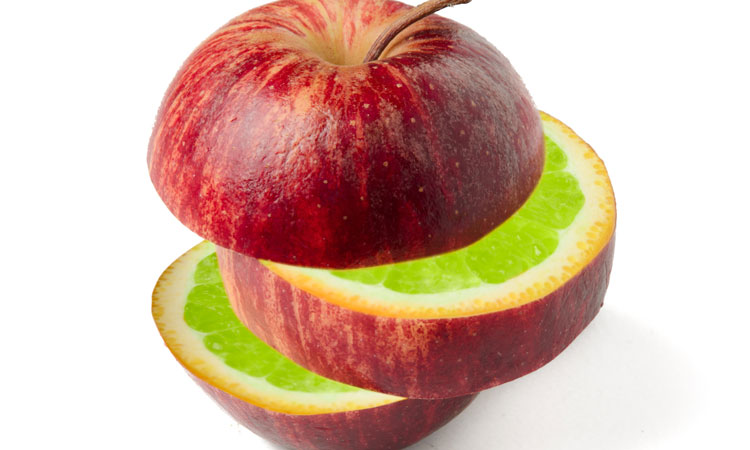Fighting food fraud in 2017
Posted: 5 June 2017 | Gavan Wafer - Head of Crime Operations at the National Food Crime Unit | No comments yet
Gavan Wafer, Head of Crime Operations at the National Food Crime Unit offers his insight into tackling food fraud in the 21st Century.


Just how big an issue is food fraud at present in our industry?
Any industry is susceptible to fraud and one as complex and diverse as the UK food industry can offer temptations to those looking to exploit systems and cut corners. Where there are criminal profits to be made then unscrupulous operators will seek to capitalise on the opportunities on offer. In my law enforcement career I know that criminals will often seek to exploit weaknesses in any system that could generate income for them. Fraud is an acquisitive crime allied to a rational assessment by the criminal that balances the reward against the risk involved.
A criminal embarking on an illegal enterprise will use their perceived logic – albeit often flawed – to commit their crimes without a proper understanding or knowledge of the law enforcement capabilities that increase their chance of detection. To the victim this is unimportant – their concern is that they have been misled or defrauded – but the impact is real.
I have been continually surprised at the quantity and scope of allegations that are made and issues that we uncover that span the whole spectrum of food products. Our knowledge is increasing all of the time and we have some very talented analysts examining where the current threats lie to enable us to direct our resources efficiently. Realistically food fraud only affects a tiny percentage of the food consumed in the UK but it can be serious.
I have been immensely impressed at the real appetite of the industry to tackle food fraud and there is no doubt that UK food is inherently safe. I am glad to say that even where the consumer is a victim of food crime it is very unlikely to impact detrimentally on their health They may be deceived or misled in what they are purchasing but it is very rarely physically harmful although there are circumstances that this does happen, such as around allergens which has led to some fatalities.
So I would say that food fraud is a serious issue, not confined to any particular sector or market and that constant vigilance is the best way forward. Like any form of crime we all need to be alert to it and help to defeat it, but not alarmed by it.
What sort of solutions might we need to consider?
There really is no silver bullet for this!
Food crime isn’t new – it’s been around since the Roman times if not before – but what is new is the law enforcement and industry approach to it. I am convinced that industry has many of the answers here and the National Food Crime Unit (NFCU) is very keen to work with them.
Why is the relationship between science and food so key to driving forward progress?
Any scientific analysis that demonstrates to a high level of certainty that a product has been adulterated or that its origin is suspect is of interest to the NFCU. Although science can offer many conclusive indicators that something has occurred it may not provide evidence as to how or why it has happened. Answering such questions requires further inquiries to be made and that is where I see NFCU Intelligence Officers providing the final pieces in the puzzle.
Could you give us an insight into the sort of operations the National Food Crime Unit undertake?
The NFCU is a criminal intelligence unit which was established to help protect consumers by detecting and facilitating the disruption of serious criminal dishonesty wherever it occurs within the food supply chain. Where we have identified offences then we will share intelligence with an appropriate law enforcement body for further action. One of my top priorities so far has been targeting those who market a dangerous chemical called 2,4 dinitrophenol (DNP) as a weight loss supplement.
The consumption of DNP is highly dangerous and has led to several fatalities in the UK. Generally DNP is advertised on the internet in capsule form. The NFCU has led a targeted campaign to inform the public and tackle the supply. This has included working with the police and local authorities to execute search warrants on suspected DNP suppliers. As a result there are several prosecutions pending which the NFCU instigated.
We are also involved in many more traditional food crime inquiries around the mis-representation of product provenance, origin or quality; diversion of waste products into the food chain; extension of ‘use-by’ dates and unlawful meat processing – basically the full gambit of food crime offences!
Imagine we are having this conversation in a year’s time… What do you predict will have changed?
In late 2016 the NFCU was reviewed by an independent steering group. Their recommendations clearly signposted that, subject to securing funding, the NFCU should have an investigatory capability, have the prevention of food crime as part of its remit and set standards and training in food crime matters. There is a great deal of work ongoing to realise these recommendations and we are engaging with other government departments to secure broad agreement on the way forward.
Biography
Gavan Wafer has spent a career in law enforcement, with over 25 years work within enforcement and Criminal Investigation at HM Customs and Excise and then HM Revenue and Customs. During his service he investigated and prosecuted some of the UK’s biggest cigarette smuggling, alcohol diversion, fraud and money laundering cases and received judicial commendations for doing so. He joined the NFCU in November 2014 as the Head of Crime Operations.
An early warning system for food safety and fraud
The issue of food fraud is one that is continuously evolving and thus strategies for managing its impact have to proactively evolve in order to mitigate. Premier Analytical Services’ approach to tackling food fraud involves creating a mine of information, collated through internal expertise in addition to now well established links into the food industry, academia and regulators to gain insight and share knowledge.
Drawing on experience as a DEFRA Centre of Expertise and with the outlined links above our ammunition is producing proactive strategies of analysis in line with horizon scanning and continuous risk assessments. This involves monitoring various sources of information, namely legislative and scientific publications, as well as maintaining key memberships and relationships with relevant food research and government bodies. This daily monitoring then gets reviewed in line with our product and ingredient base, for both our own and our clients, to determine the impact for manufacturing and production.
This acts, in line with proactive analysis, as an early warning system for food safety and fraud.
The other area of investment in terms of combating food fraud by Premier Analytical Services is scientific innovation. Using the information gained through Horizon Scanning, as well as working with bodies such as the Food Standards Agency, we are constantly striving to find novel techniques to combat the issues we uncover. Some specific areas of expertise within PAS are now well established to tackle food fraud, such as analysis for GM, Melamine and Illegal Dyes. Whereas some are still in their infancy such as using Next Generation Sequencing to analyse herbs and spices, as food fraud challenges become more complex in the manufacturing industry so in turn does the analysis to mitigate the risk.
paslabs.co.uk
Is it really food fraud if perception does not match reality?
When purchasing free range eggs, it is reasonable to expect that the eggs have come from hens which spend a large part of their life outside. The reality is that there is a significant proportion of hens producing eggs in ‘free range’ systems that are not going outside at all.
The reasons for variations in ranging activity are numerous, but undoubtedly management has a significant impact. The recent (and in places, ongoing) housing restrictions resulting from the Avian Influenza controls has further stirred the debate. During the housing order, all free range poultry had to be housed. For the 12 weeks following, eggs from these hens continued to be sold as free range. Beyond this period, stickers declaring ‘housed for welfare reasons’ appeared on the egg boxes. Interestingly, this didn’t seem to be the case for products made with free range eggs!
During these restrictions, most farmers experienced the benefits of housed birds – no wet litter issues, improved food conversion and higher productivity with lower cost of production. Housing meant the detectable signals, seen in eggs from ranging birds which are used to validate genuine free range eggs, vanished. This prevented supply chains from monitoring the integrity of their supply, increasing risk.
Since the restrictions have been lifted the challenges are all too apparent. Pullets put onto farms during the housing order are reluctant to go outside, whereas hens ranging prior to the housing order have reverted to their previous ranging activity. Ranging seems to be an early learned behaviour and the onus is on farmers to re-establish ranging activity in flocks so testing can continue to provide reassurance and supply chain integrity protecting this vulnerable sector.
If this does not happen, the hens do not range and the farmers continue to sell the eggs as free range – is this considered fraud?
foodforensics.co.uk
Advanced analytical techniques reveal current food fraud trends
Financial allure and the perceived lack of robust sanctions means food fraud continues to be identified in the labs at Eurofins, with ever more sophisticated methods deployed by fraudsters.
Alan Richards, Head of Scientific Services at Public Analyst Scientific Services, part of Eurofins, discusses recent findings.
“In a recent report into food fraud connected with coconut water, 20% of over 2,000 samples were found to be adulterated, containing added sugars and in some cases added water. Testing is based upon the ratios of natural isotopes of carbon, hydrogen and oxygen in sugars and water which vary around the world.

“Honey has also been extensively tested over the last two years using isotope ratios and pollen analysis and many cases identified for mis-description of geographical origin, wrong declaration of botanical origin and also over-heating and added sugars.
“Alcohol products continue to be targeted. In the past, fraud was related to simple dilution, now it’s more likely to be wholly counterfeit. Eurofins labs are reporting drinks that are being made from industrial alcohol, often available as duty free where huge profit can be made. Detection of the fraud is based upon the flavour and volatiles in the spirits.
“When it comes to meat, following the horse meat scandal testing has been carried out on a wider range of species in foods, but meat substitution is still being reported. We suspect many instances of this are due to cheap and mechanically recovered meat being used to bulk out the meat content, leading to bigger potential profits.”
Businesses seeking British Retail Consortium accreditation now have a mandatory requirement to control the vulnerability of food to fraud. Eurofins Food and Water Testing will hold a Food Fraud Advisory Course on 13th July 2017, discussing responsibilities and the strategies available for conducting raw materials vulnerability assessments.
eurofins.co.uk
Last year, a study on food fraud attracted attention in Europe: one out of three fish dishes isn’t what is said on the menu
It didn’t spark an outcry like the one over the horsemeat scandal, but the study on mislabelled fish conducted by the ‘Oceana’ institute did attract a great deal of attention. The analysis of fish samples from more than 150 restaurants and canteens revealed that the fish served was not the fish mentioned in the menu in over 30% of cases.
Even though findings were alarming, the problem isn’t new. In 2012, studies indicated that almost 40% of fish consumed within the EU was not the species advertised. As a consequence, the EU initiated the ‘Labelfish’ project in order to improve labelling and traceability of fishery products. This resulted in EU regulation 1379/2013 which came into force in 2014, requiring fishery products to be labelled with both the commercial name and the scientific name. Moreover, the production method, the fishing gear and the fishing area must be labelled.

A further study in 2015 demonstrated that there had been a significant decrease of mislabelling with under 5% of samples found to be mislabelled. However, the analysis only included fish products sold in supermarkets; however the problem still exists in restaurants.
The journal Conservation Biology published a study which examined more than 300 samples in the USA from 26 sushi restaurants. The study found that 47% of the samples were mislabelled with high occurrences of mislabelling for halibut, red snapper and yellowfin tuna.
Fish therefore remains among the most counterfeited foods. A particular problem is the long production chain which often includes several intermediaries from different countries. Modern technologies can help to combat food fraud. For example, PCR tests for fish authentication allow authorities to detect mislabelling. And the so-called blockchain technology could contribute to greater transparency and traceability of fishery products in the future.
r-biopharm.com
Quantitative PCR analysis of meat speciation data using the 2-∆∆Cq method
Quantitative PCR is a highly sensitive and accurate method of assaying samples for nucleic acid content. In combination with well-established DNA extraction procedures, PCR is now being used by many labs to quantify relative levels of animal DNA in total meat. Using the 2^-∆∆Cq method, calculations can be accurately applied to multiplex formats of speciation tests, using total DNA as a positive control calibrator sample.
Typically, a high quality test will need to determine adulteration down to 1% of the total meat or better. In addition, cooking poses a particular challenge since it degrades both proteins and nucleic acids considerably reducing the quality of the sample. For these reasons, mitochondrial DNA is an ideal candidate because it is a ‘multi-copy’ being present at about 75 copies per cell and enables a level of test sensitivity that would be completely impossible if a single copy genomic DNA target was selected.
The usual configuration of a DNA test is to measure two targets within the test sample. One of these uses a universal primer/probe set that will detect all animal DNA present in the sample. Such a measure is taken to represent the total amount of meat in the sample. A second primer/probe targets the DNA of a potentially adulterating meat. By comparing the relative signal of each it is possible to calculate the percentage of DNA that is from the adulterating source whilst a negative result confirms the provenance of the test sample
In this whitepaper found on the New Food website, it was concluded that the Primerdesign genesig® q16 speciation workflow, software solution, and normalising the test results using species-specific total DNA as a calibrator, all combine to produce a system that is simple and accurate.
primerdesign.co.uk




